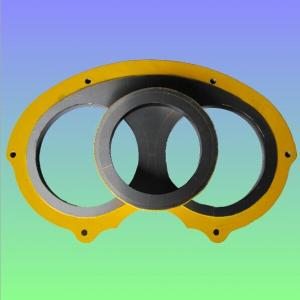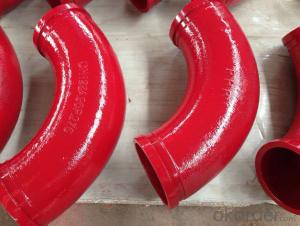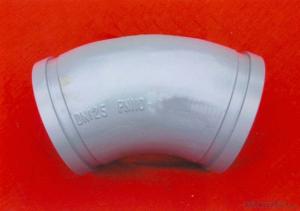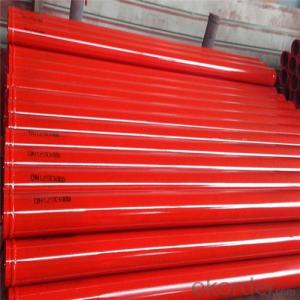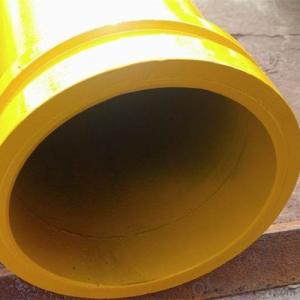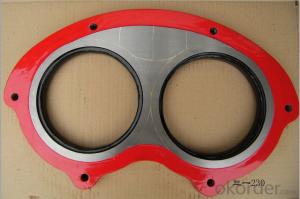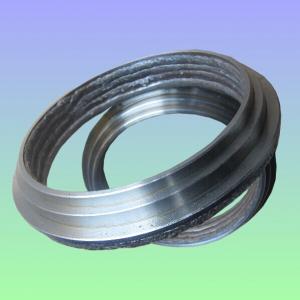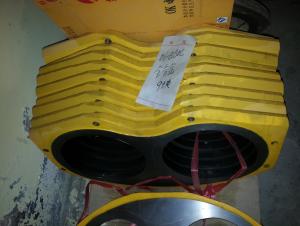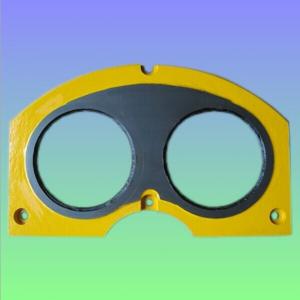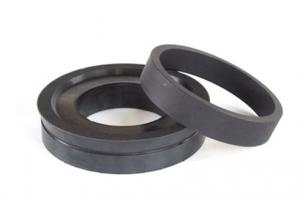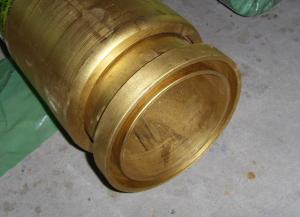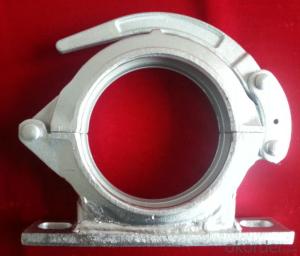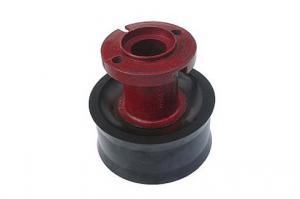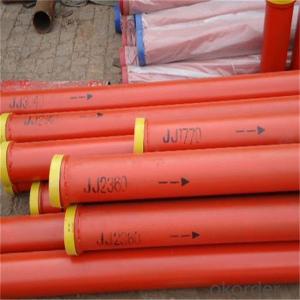SANY Tungsten Carbide Spectacle Plate and Wear Ring DN200
- Loading Port:
- Tianjin
- Payment Terms:
- TT or LC
- Min Order Qty:
- 3 pc
- Supply Capability:
- 1000 pc/month
OKorder Service Pledge
OKorder Financial Service
You Might Also Like
Product Name: SANY Tungsten Carbide Spectacle Plate and Wear Ring DN200
1. Specification
1. Material: Plate body S35C steel, tungsten carbide E5 grade ,
2. Lifetime: 30,000~80,000cbm
3. HRA≥86
4. Germany Welding rod used for hardfacing
5. tensile strength ≥ 2500 N/mm2
6. Application: trailer and trunk mounted Sany concrete pump
Notes: total series of Concrete Pump Spectacle Wear Plate and Cutting Ring for different brand concrete pump (PUTZMEISTER, SCHWING, CIFA, SANY, ZOOMLION, IHI, KYOKUTO,Niigata Etc) available from us.
2. Application
Our SANY Tungsten Carbide Spectacle Plate and Wear Ring DN200 have been successfully exported to many countries from 1998, Our main markets as below: Middle East, Southeast Asia, America, Brazil, Italy, Russia, South Africa etc
Aiming at the largest concrete pump parts manufacturer, and reliable, professional supplier in China, we can supply concrete pump elbows, delivery pipes, casting or forging couplings, end rubber hoses, rubber pistons, tungsten wear plates, delivery cylinders, and other hydraulic parts, one stop service for your concrete pump parts and accessory business.
3. Package
Every 60pcs SANY Tungsten Carbide Spectacle Plate and Wear Ring DN200 put in one seaworthy wooden box, and 20 boxes in one 20feet container.
FAQ:
Q1: Why buy Materials & Equipment from us?
A1: All products have its ISO certifications, adheres to the highest standards and a commitment to supply chain safety and customer satisfaction.
Q2: How do we guarantee the quality of our products?
A2: We have established an advanced quality management system which conducts strict quality tests at every step, from raw materials to the final product. At the same time, we provide extensive follow-up service assurances as required.
Q3: How soon can we receive the product after purchase?
A3: Within three days of placing an order, we will begin production. The specific shipping date is dependent upon international and government factors, but is typically 10 to 30 workdays.
Q4: If we can produce some SANY Tungsten Carbide Spectacle Plate and Wear Ring DN200 according to customers request?
A4: Yes, we can produce SANY Tungsten Carbide Spectacle Plate and Wear Ring DN200 according to the difference country situations and different concrete pump to make it suitable to the market and customers. We have very professional technical team to make the design.
Q5: How to make a quick resolution for after service?
A5:We have overseas branches all-around of world, IF needed, the seller shall dispatch 2 engineers to the buyer's site for supervision of training. The buyer shall make available of necessary facilities &skilled personnel at site for training.
Images:
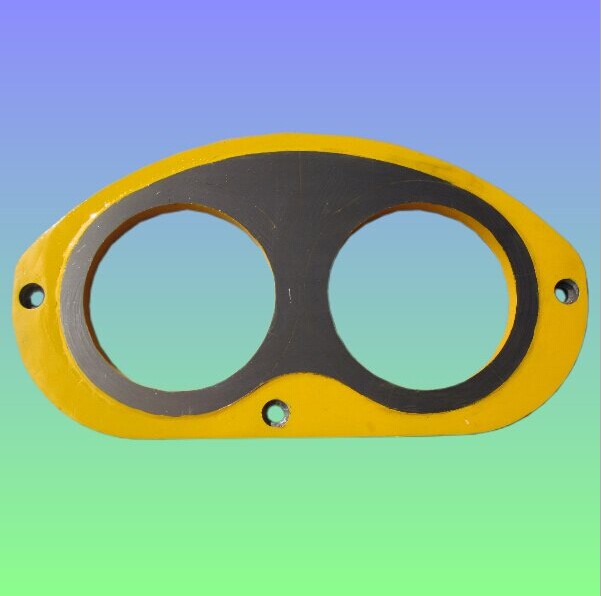
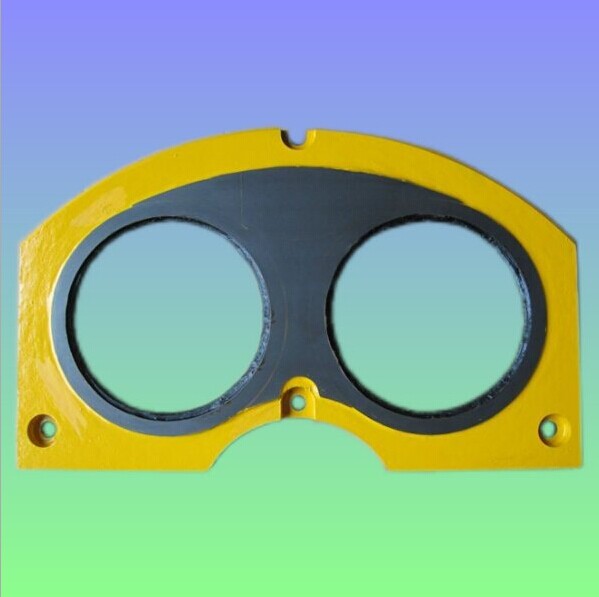
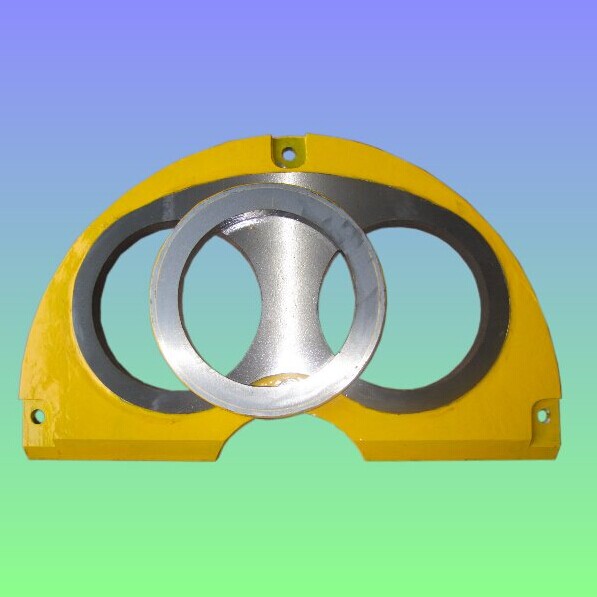
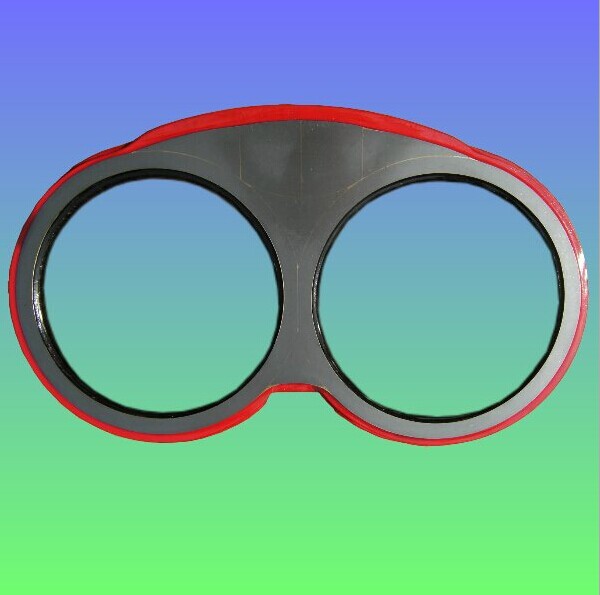
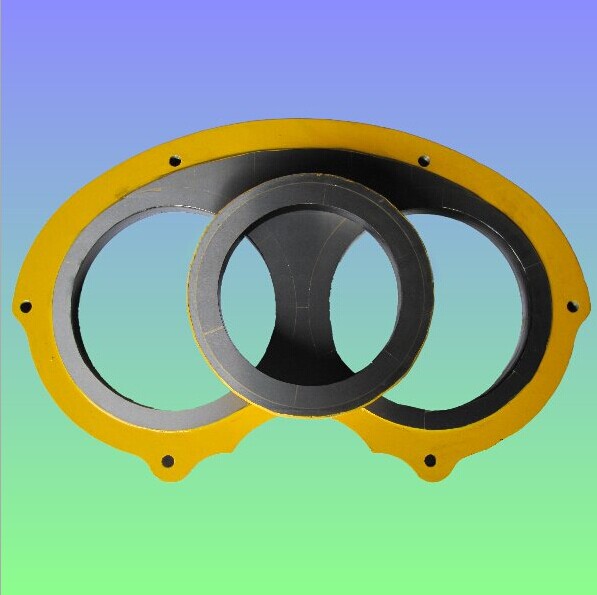
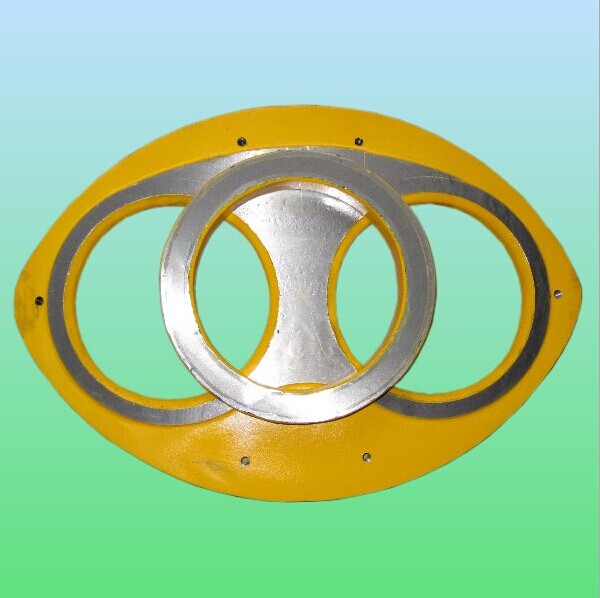
- Q: Are there any specific guidelines for the disposal of old or damaged concrete pump spare parts?
- Yes, there are specific guidelines for the disposal of old or damaged concrete pump spare parts. It is recommended to contact local waste management authorities or recycling facilities to inquire about proper disposal methods. In many cases, recycling concrete pump spare parts is encouraged to reduce environmental impact.
- Q: What are the different sizes of concrete pump pipes available?
- The sizes of concrete pump pipes typically range from 2 inches to 6 inches in diameter.
- Q: How often should a concrete pump wear plate be replaced?
- A concrete pump wear plate should be replaced when it shows signs of significant wear and tear or when it starts to affect the performance and safety of the pump. The replacement frequency can vary depending on factors such as the type of concrete being pumped, the pump's usage, and the quality of the wear plate. Regular inspection and maintenance can help determine the appropriate replacement schedule.
- Q: How often should concrete pump hydraulic motors be inspected and replaced?
- The inspection and replacement frequency of concrete pump hydraulic motors varies depending on several factors, including usage intensity, maintenance practices, and the specific guidelines of the manufacturer. However, as a general guideline, it is advisable to inspect hydraulic motors every 6 to 12 months. During this inspection, it is important to check for signs of wear and tear, leaks, and any abnormal noises that may occur during operation. Additionally, regular maintenance tasks like lubrication and cleaning should be carried out according to the manufacturer's recommendations. Ultimately, the decision to replace hydraulic motors should be based on their overall condition and performance. If noticeable issues or a significant decrease in efficiency are observed, it may be necessary to replace the hydraulic motors before the suggested inspection interval.
- Q: What are the different types of concrete pump hydraulic filters?
- There are three main types of concrete pump hydraulic filters: suction filters, return line filters, and pressure line filters. Suction filters are located at the inlet of the pump and prevent debris from entering the system. Return line filters clean the hydraulic oil as it returns from the system back to the reservoir. Pressure line filters are installed in the discharge line and remove contaminants before the oil reaches the hydraulic components.
- Q: How often should hopper agitator shafts be inspected or replaced in a concrete pump?
- Hopper agitator shafts in a concrete pump should be regularly inspected and maintained to ensure optimal performance and prevent potential breakdowns. The frequency of inspection or replacement depends on several factors such as the usage and operating conditions of the pump. As a general guideline, it is recommended to inspect the hopper agitator shafts at least once every three to six months. During the inspection, the shafts should be checked for any signs of wear, damage, or misalignment. If any issues are detected, appropriate measures should be taken, such as lubrication, realignment, or replacement of damaged parts. However, it is important to note that the frequency of inspection may vary depending on the intensity of use, the type of materials being pumped, and the overall condition of the pump. For instance, if the pump is subjected to heavy-duty or continuous operation, it may be necessary to inspect the agitator shafts more frequently, such as on a monthly basis. Regular maintenance and inspection of hopper agitator shafts not only ensure the smooth operation of the concrete pump but also extend the lifespan of the equipment. Timely detection and resolution of any issues can prevent costly repairs or downtime in the future. Additionally, following the manufacturer's recommendations and guidelines for maintenance can help optimize the performance and reliability of the concrete pump.
- Q: How do I troubleshoot issues related to concrete pump spare parts control systems?
- In order to troubleshoot issues related to concrete pump spare parts control systems, it is crucial to adopt a systematic approach. The following steps can be taken: 1. Clearly identify the problem: Start by precisely identifying the issue you are encountering with the control system. Is it completely non-functional? Are there specific functions or components that are not operating correctly? Understanding the problem will help guide your troubleshooting efforts. 2. Verify power supply: Make sure that the control system is receiving the appropriate power supply. Inspect the power source, circuit breakers, and fuses to ensure there are no interruptions or faults in the electrical supply. If necessary, replace or repair any faulty components. 3. Examine connections: Inspect the wiring connections and terminals within the control system. Loose or damaged connections can cause issues with the system's functioning. Tighten any loose connections and repair or replace any damaged wiring. 4. Review control settings: Confirm that the control settings are accurately adjusted according to the manufacturer's specifications. Incorrect settings can result in malfunctions or inefficient operation. Consult the user manual or contact the manufacturer for guidance on proper control settings. 5. Conduct diagnostic tests: Many control systems have built-in diagnostic features or error codes that can assist in identifying specific issues. Refer to the system's manual to understand how to access and interpret these diagnostic tools. Carry out any recommended diagnostic tests to pinpoint the problem area. 6. Inspect sensors and actuators: Sensors and actuators play a vital role in the operation of the control system. Check these components for any damage, misalignment, or malfunctioning. Clean or replace sensors as necessary and ensure that the actuators are properly connected and functioning correctly. 7. Seek technical support: If you have followed the aforementioned steps and are still unable to resolve the issue, it may be beneficial to contact the manufacturer's technical support team. They can offer expert guidance on troubleshooting the specific control system and may suggest additional steps or solutions. Always prioritize safety when troubleshooting control systems. Make sure that the pump is turned off and disconnected from the power source before working on any electrical components. If you are uncertain or uncomfortable with any troubleshooting steps, it is advisable to seek professional assistance.
- Q: How often should concrete pump control levers be inspected and replaced?
- Concrete pump control levers should be inspected regularly, ideally on a monthly basis, to ensure they are in proper working condition. However, the need for replacement would depend on various factors such as the quality of the lever, frequency of use, and any signs of wear or damage. If any issues or concerns arise during inspection, prompt replacement should be considered to maintain safe and efficient operation of the concrete pump.
- Q: How can the concrete pump pipe be cleaned?
- Secure the cover at the end of the pipe so that the concrete does not hurt.
- Q: Can I get spare parts for concrete pump boom arms and pipes?
- Yes, spare parts for concrete pump boom arms and pipes are available. Many manufacturers and suppliers offer a wide range of spare parts specifically designed for concrete pump boom arms and pipes. These spare parts can be easily found and purchased from authorized dealers or online stores. It is important to ensure that you provide accurate specifications and details of your concrete pump model to find the correct spare parts for replacement or repair.
Send your message to us
SANY Tungsten Carbide Spectacle Plate and Wear Ring DN200
- Loading Port:
- Tianjin
- Payment Terms:
- TT or LC
- Min Order Qty:
- 3 pc
- Supply Capability:
- 1000 pc/month
OKorder Service Pledge
OKorder Financial Service
Similar products
Hot products
Hot Searches
Related keywords
